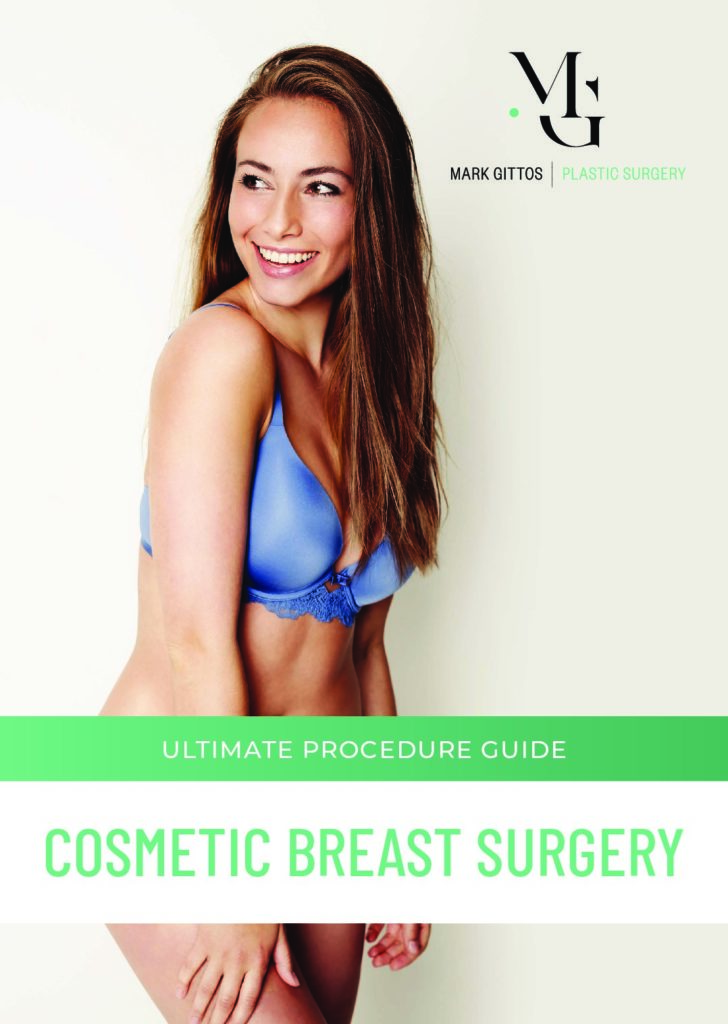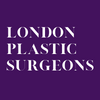What to Do and What to Avoid During Recovery after Breast Implant Removal
Whether you’ve already undergone the procedure or are considering this important step, understanding the recovery process after a breast implant removal surgery is crucial for a successful healing journey. In this blog, we will discuss different aspects of the recovery process, including options for breast implant removal surgery and what to do and to avoid after the procedure.
Mr Mark Gittos is a highly skilled and renowned plastic surgeon specialising in breast procedures, with practices in both London and Auckland. With a wealth of experience and a commitment to patient satisfaction, Mr Gittos is dedicated to providing personalised care and exceptional results for those patients seeking breast augmentation, reduction, or reconstruction.
Download Mr Mark Gittos’ Guide to Cosmetic Breast Surgery

When to Get Breast Implant Removal Surgery
Breast implant removal surgery is a procedure in which breast implants are removed for various reasons. While many women enjoy the benefits of breast augmentation, there are circumstances in which implant removal becomes necessary or desired. Recognising when to consider breast implant removal surgery is important for maintaining overall health and well-being.
One common reason for breast implant removal is the development of complications related to the implants. These complications may include capsular contracture, implant rupture or leakage, infection, or implant displacement. Capsular contracture occurs when the scar tissue that forms around the implant tightens and hardens, causing discomfort or pain and a distorted breast appearance. Implant rupture or leakage can result from damage to the implant shell, leading to the release of the filling material into the surrounding tissue. In these cases, prompt removal of the affected implant is crucial to prevent further complications and ensure optimal health.
Another reason some women opt for breast implant removal is a change in personal preferences or lifestyle. Over time, a woman’s aesthetic preferences or her body’s natural changes may lead her to reconsider her initial decision to have breast implants. Factors such as ageing, weight fluctuations, or pregnancy can alter the appearance of the breasts, prompting a desire for a different size or shape. Some women may simply decide that they no longer want breast implants and prefer to return to their natural breast size.
In some instances, breast implant removal may be recommended due to health concerns unrelated to the implant itself. For example, women who have been diagnosed with breast cancer or other medical conditions may need to undergo implant removal as part of their treatment plan. Some women with breast implants may develop symptoms that they believe to be related to their implants, such as autoimmune disorders or other systemic issues, leading them to consider explant surgery.
Breast Implant Removal Surgery Options
The breast implant removal surgery can be performed as an explant surgery alone, or in association with a lift or even with the replacement of the implants. The type of surgery performed affects both the results achieved with the surgery and the recovery process. Here are the options:
1. Breast Implant Removal with a Lift

Breast implant removal with a lift, also known as explantation with mastopexy, is a surgical procedure that combines the removal of breast implants with a breast lift to achieve an aesthetically pleasing and more natural-looking breast contour. This procedure can be an ideal solution for women who wish to have their implants removed but are also concerned about the potential for breast sagging or drooping following the explant surgery.
Breast implant removal alone may leave the breast tissue stretched and lacking the necessary elasticity to return to its original shape, particularly in cases where the implants were large or had been in place for a long time. This can result in a deflated or drooping appearance of the breasts post-surgery. By combining explantation with a breast lift, your plastic surgeon can address these concerns, removing excess skin and reshaping the breast tissue to create a firmer, more youthful appearance.
During the procedure, your plastic surgeon will first remove the breast implants through an incision, often using the same incision site as the original implant surgery. The breast lift will then be performed by removing excess skin, reshaping the breast tissue, and repositioning the nipple and areola to a higher, more youthful position on the chest. The incisions are then closed with sutures, and a surgical bra or compression garment may be applied to support the breasts during the recovery process.
The recovery period for breast implant removal with a lift is similar to that of a standalone breast lift or explant procedure. Patients can expect some swelling, bruising, and discomfort, which can be managed with prescribed pain medication and appropriate post-operative care. Most patients can return to work and daily activities within 1-2 weeks, but the healing process might take up to a few months to be completed.
2. Breast Implant Removal and Replacement
Breast implant removal and replacement is a surgical procedure in which existing breast implants are removed and replaced with new ones. This option is particularly suitable for patients who have experienced complications, dissatisfaction with their current implants, or desire a change in their breast size or shape. By removing and replacing the implants, you can achieve an improved aesthetic outcome while maintaining the benefits of breast augmentation.
There are several reasons why breast implant removal and replacement may be a good option for some patients. One common reason is the natural ageing of the implants, as they are not designed to last a lifetime. Generally, implants have a lifespan of 10-20 years, after which they may need to be replaced due to wear and tear or potential complications. More than this, patients may experience complications such as capsular contracture, implant rupture, or displacement, which warrant the removal and replacement of the affected implant. In other cases, patients may simply desire a change in their breast size or shape due to personal preferences, body changes, or lifestyle factors. In such instances, the removal and replacement of implants can help patients achieve their desired appearance while addressing any existing issues with their current implants.
During breast implant removal recovery, it is important to follow your surgeon’s post-operative instructions and be aware of activities and factors to avoid in order to promote healing and achieve optimal results. Here are some key points to consider during the recovery process:
What to Avoid during Breast Implant Removal Recovery
- Strenuous activities and heavy lifting: Avoid any vigorous exercise, heavy lifting, or activities that put strain on your chest muscles for at least 4-6 weeks after surgery. Engaging in such activities can impede the healing process and may cause complications
- Smoking and alcohol consumption: Refrain from smoking and limit alcohol consumption, as both can hinder the healing process, increase the risk of complications, and negatively affect the surgical outcome
- Tight or ill-fitting clothing: Avoid wearing tight, restrictive, or underwire bras during the recovery period, as they can cause irritation or pressure on the incisions and impede healing. Instead, opt for a surgical bra or a soft, supportive sports bra as recommended by your surgeon
- Sleeping on your stomach or side: Sleep in an upright or semi-upright position for the first 1-2 weeks after surgery to minimise swelling and promote proper fluid drainage. Avoid sleeping on your stomach or side, as this can put pressure on the surgical site and compromise the healing process
- Ignoring signs of complications: If you experience fever, increased pain, redness, warmth, or discharge around the incision site, contact your surgeon immediately, as these may be signs of infection or other complications
What to Do during Recovery to Get Better Results

- Follow your surgeon’s instructions: Adhere to all post-operative care instructions provided by your plastic surgeon, including wound care, medication usage, and follow-up appointments. This will help ensure a smooth recovery and better results
- Maintain a healthy diet: Eating a balanced, nutritious diet rich in vitamins and minerals can aid in the healing process and promote overall well-being during recovery
- Stay hydrated: Drink plenty of water to keep your body hydrated, as proper hydration can help minimise swelling and improve the healing process
- Gentle movement: While avoiding strenuous activities, engage in gentle movement and light walking as soon as your surgeon permits. This can help stimulate blood circulation, reduce the risk of blood clots, and speed up the recovery process
- Patience and emotional support: Recovery takes time, and it’s essential to be patient with your body as it heals. Seek emotional support from friends, family, or a therapist to help you cope with any feelings of anxiety, frustration, or sadness during the recovery process
When to Seek Medical Help during Recovery after Breast Implant Removal Surgery
While most patients recover without significant issues, it is essential to seek medical help if you experience any of the following:
- Signs of infection: If you notice increased redness, warmth, or tenderness around the incision site, or if you develop a fever, these may be signs of an infection. In such cases, it is important to contact your surgeon or healthcare provider immediately, as untreated infections can lead to more severe complications and may affect your overall surgical outcome
- Excessive bleeding or fluid discharge: While some mild bleeding or fluid discharge is normal during the early stages of recovery, excessive bleeding or persistent discharge may indicate a problem. If you are concerned about the amount or nature of the fluid coming from your incisions, reach out to your healthcare provider for guidance
- Severe or persistent pain: While some discomfort and pain are expected following breast implant removal surgery, severe or persistent pain that does not improve with prescribed pain medication should be reported to your surgeon. This may indicate an underlying issue that requires medical attention
- Shortness of breath or chest pain: If you experience shortness of breath, chest pain, or any other symptoms that may suggest a blood clot, seek immediate medical help. Blood clots, though rare, can be a serious complication and require prompt treatment
FAQs about Breast Implant Removal Surgery and Recovery

How painful is it to have breast implants removed?
- The pain experienced during breast implant removal varies from person to person, depending on factors such as individual pain tolerance, the specific technique used, and the presence of complications. Patients usually report that the pain is manageable with prescribed pain medications and proper post-operative care. It is common to experience discomfort, swelling, and soreness for a few days or weeks following the surgery, but the intensity and duration of the pain should gradually diminish over time.
What to expect when having breast implants removed?
- When having breast implants removed, you can expect the procedure to be performed under general anaesthesia. After the surgery, you will rest in the recovery room for a few hours until the effects of the anaesthesia wear off, then you can go home. Make sure to have someone to drive you home and stay with you for the first 24 to 48 hours after the surgery as you might experience pain and discomfort during this time.
How long do you have to sleep upright after breast implant removal?
- After breast implant removal, it is generally recommended that patients sleep in an upright or semi-upright position for approximately 1-2 weeks. This position helps to minimise swelling and promote proper drainage of fluids. It is essential to follow your surgeon’s specific instructions regarding the optimal sleeping position and the duration for which you should maintain it, as these recommendations may vary based on individual circumstances and surgical techniques.
Is breast implant removal a major surgery?
- Breast implant removal is considered a surgical procedure, but whether it is classified as major surgery depends on the complexity of the individual case. In most instances, the surgery is relatively straightforward and can be completed within 1-2 hours. However, if complications are present, such as a ruptured implant or severe capsular contracture, the surgery may be more complex and could be considered major. If a breast lift or additional reconstructive procedures are performed simultaneously, the overall surgery could be more extensive.
Why are my breasts deformed after explant?
- Breasts may appear deformed or deflated after explant surgery due to several factors. One reason is that the skin and tissues have been stretched to accommodate the implant, and once the implant is removed, the breast tissue may not immediately retract to its original position. This effect can be more pronounced in cases where the implants were large or had been in place for a long time. The removal of scar tissue or the capsule surrounding the implant can affect the shape and appearance of the breast. In some cases, a breast lift or other reconstructive procedures may be necessary to restore a more natural and aesthetically pleasing appearance.
Further Reading about Breast Surgery with Mr Mark Gittos
- Read Mr Mark Gittos’ Breast Implant Removal Surgery Page
- Read Mr Mark Gittos’ Implant Removal with a Lift Surgery Page
- Read Mr Mark Gittos’ Breast Implant Replacement Surgery Page
- Read Mr Mark Gittos’ Breast Implant Choices
- Read Mr Mark Gittos’ Blog about Do I have a ruptured Breast Implant?
- Read Mr Mark Gittos’ Blog about Solutions for Firmer Breasts
Medical References about Breast Implant Removal Recovery
- Breast Implant Removal: What to Expect, Surgery & Recovery
- Breast Implant Removal Recovery
- What to Expect during Breast Implant Removal
- Explant of under muscle implants under local | Ask A Surgeon
- Breast Implant Removal | Ohio State Health & Discovery
About Mr Mark Gittos FRACS (Plast) – London Plastic Surgeons
Practice locations in London & Essex, UK and Auckland, New Zealand.
Mr Mark Gittos offers high quality, natural-looking cosmetic surgery results and is highly experienced in Breast, Body and Face Surgery having performed over 4000 Surgeries in the last 26 years.
With world-wide expertise Mr Gittos is an expert in breast, face and body surgery for men & women.
Mr Mark Gittos is a leading Specialist Plastic Surgeon and operates a practice in London UK and Auckland New Zealand. His practice focuses on both surgical and non-surgical procedures, each designed to help restore, improve or change a physical characteristic or problem. The first step in every case is to talk through your personal requirements and explore all the options, before deciding on the most effective solution.
Naturally, before any treatment is begun, we will explain clearly the advantages and risk factors; so that you have the information you need to make an informed decision that is best for you. Visit the practice to find out more.

NEXT STEPS
Do your Research
- Read the Website and Blogs relevant to your procedure
- Browse our Frequently Asked Questions including how to choose a Surgeon for your procedure
- Download the Guides to Surgery
What to Bring to your Plastic Surgeon Consultation
- Bring a friend or relative to help discuss the information and your choices
- Take lots of notes and read the documents provided thoroughly
- Want more information before scheduling your consultation?
Book your Initial Surgery Consultation
- A Referral from your GP or specialist is helpful but NOT essential – you can have a consultation without a GP Referral
- Email us or Call in London on 07557 858156 to arrange your surgeon consultation appointment.
- Book a consultation with Mr Gittos by paying the Consultation Fee
Please contact us to arrange to book a consultation with our Specialist Plastic Surgeon or to speak with our Patient Care Advisor.
Send an enquiry form today or UK phone 07557 858156 during Clinic Hours
